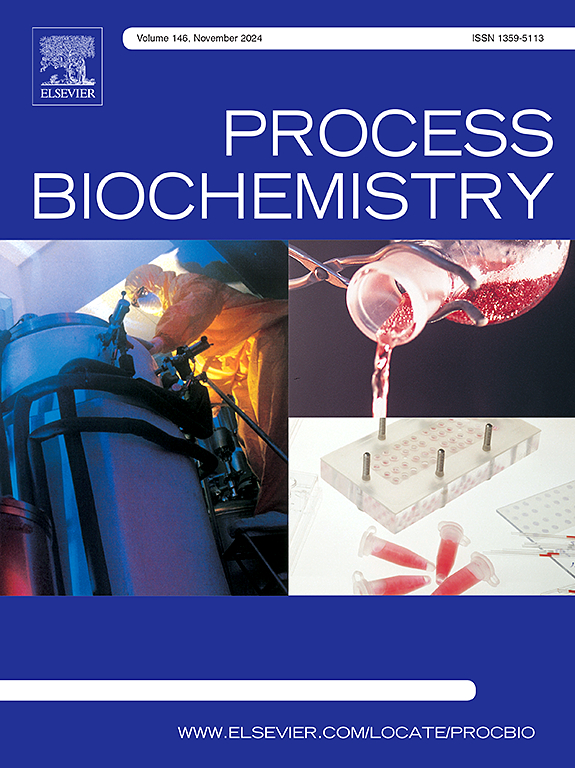Efficient kinetic resolution of D,L-phosphinothricin using an aminotransferase-mediated cascade
IF 3.7
3区 生物学
Q2 BIOCHEMISTRY & MOLECULAR BIOLOGY
引用次数: 0
Abstract
2-oxo-4-[(hydroxy)(methyl)phosphinoyl]butyric acid (PPO) is a valuable prochiral keto acid for the asymmetric synthesis of the important herbicide L-phosphinothricin (L-PPT). Developing an efficient biocatalytic pathway to meet the increasing demand for PPO is highly attractive. In this study, a robust D-amino acid aminotransferase from Cytobacillus firmus (CfDAAT) was screened, which exhibited excellent tolerability to D,L-PPT and showed remarkable specific activity and affinity toward pyruvate (61.9 U/mg, Km = 7.4 mM). A designed co-substrate regeneration system was then introduced to shift the reaction equilibrium forward by coupling with D-amino acid oxidase (DAAO) and catalase (CAT). An efficient whole-cell biocatalyst was obtained by fine-tuning RBS intensity to coordinate the co-expression of the three enzymes. Moreover, the optimum conditions to promote overall conversion efficiency were identified by response surface methodology. Consequently, with only a catalytic amount of pyruvate (3.33 mol%) added in a 1 L reaction system, 200 mM D-PPT (400 mM D,L-PPT) was completely converted in 10 h, resulting in a PPO productivity of 3.33 g⋅L−1⋅h−1, and a notable conversion rate of > 99 % at 300 mM D-PPT in 16 h. It demonstrated a considerable catalytic level and provided a competitive route for industrial PPO production from D,L-PPT.
求助全文
约1分钟内获得全文
求助全文
来源期刊

Process Biochemistry
生物-工程:化工
CiteScore
8.30
自引率
4.50%
发文量
374
审稿时长
53 days
期刊介绍:
Process Biochemistry is an application-orientated research journal devoted to reporting advances with originality and novelty, in the science and technology of the processes involving bioactive molecules and living organisms. These processes concern the production of useful metabolites or materials, or the removal of toxic compounds using tools and methods of current biology and engineering. Its main areas of interest include novel bioprocesses and enabling technologies (such as nanobiotechnology, tissue engineering, directed evolution, metabolic engineering, systems biology, and synthetic biology) applicable in food (nutraceutical), healthcare (medical, pharmaceutical, cosmetic), energy (biofuels), environmental, and biorefinery industries and their underlying biological and engineering principles.
 求助内容:
求助内容: 应助结果提醒方式:
应助结果提醒方式:


